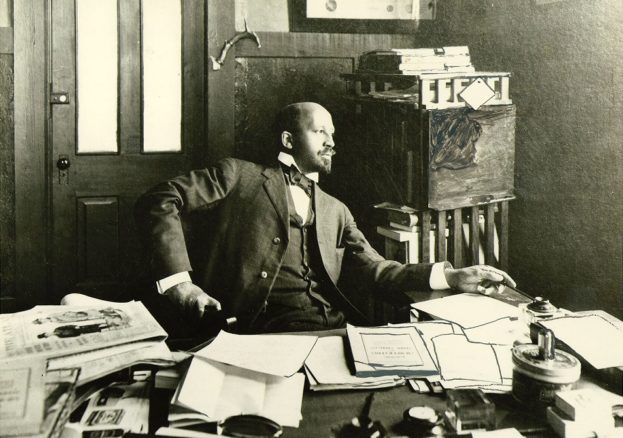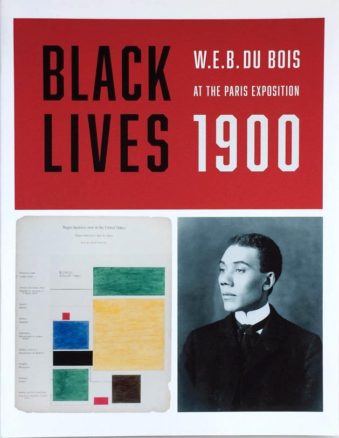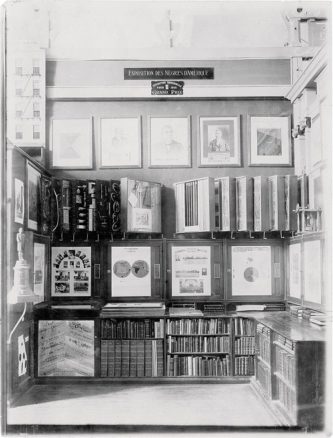
When first seeing the words Black Lives what do you instantly think of? Would, it be the #Black Lives Matter campaign in America or will your thoughts turn to the knife crime hitting the UK? It would not be a surprise, if these important issues enter your thoughts as you read those words Black Lives. For W.E.B. Du Bois, writing in the late 19th century and 20th century black lives definitely did matter especially African American ones. So, who was W. E. B. Du Bois?

He was born as William Edward Burghardt Du Bois, on 23rd February 1868, in Great Barrington, Massachusetts, America, in a fairly integrated community. He grew up to become a scholar and activist for black rights in America and internationally. He was the first African American to be awarded a PhD from Harvard University, USA, in 1895, and he was later awarded an honorary doctoral degree at University of Berlin, (that changed its name to the Humbold-Universitat Zu Berlin in 1958). Before attending the Paris Exposition in 1900, Bu Bois had visited the first Pan- African Conference in London, in July of that year. In 1905, with William Monroe Trotter, Du Bois founded the Niagara Movement, which was a black civil rights organisation. Later in 1909, he became one of the founders of the National Association for the Advancement of Coloured people, and he was the first editor of its journal ‘The Crisis’. A lifelong socialist, he died on 27th August 1963, in Accra, Ghana, having accepted an invitation from President Nkrumah to become a Ghanaian citizen. The invitation came during the American Civil Rights Movement.
So why is the new publication: ‘Black Lives: W.E.B. Du Bois and the Paris Exposition 1900’ important? In the joint essay written by Jacqueline Frances and Stephen G. Hall they write;
“At the turn of the nineteenth century, in Asia, and across Europe, the readily summoned image of the Black in the United States was that of an enslaved person, a brown-skinned man or woman of African descent who worked as a share cropping field hand on a Southern farm or in a subservient role in a white household or business…. Du Bois…an African American sociologist, historian, journalist, and anti-racist activist-sought to challenge this image”. (page 13).
The image W. E. B. Du Bois aimed to promote was of an African American man or woman, who was educated, dignified and self-assured. The African American, whether they were working-class or middle-class, had to react against the negative image created by white supremacy.

This book ‘Black Lives’, is an important document of the American Pavilion at the Paris Exposition in 1900. Du Bois’ African American friend, Thomas J. Calloway, an official for the American Pavilion, also an attorney and journalist appointed him to put together an exhibit for the Paris Exposition. Du Bois was charged with putting together positives images and provide realistic information about their lives. He was the right person to tackle this commission. He had already written the book ‘The Philadelphia Negro: A Social Study’, in 1889, the first case study of an African American community. His commission resulted in the Exhibition of American Negroes from April-November 1900. Du Bois joined the Paris Exposition after his trip to London. As Frances and Hall point out, the exhibition “was a triumph, garnering several medals for its multimedia display of historical African American achievements and contemporaneous African American ambitions, all undeterred by discriminatory laws, the Ku Klux Klan’s racist terror campaign, and other forms of state-sanctioned oppression”. (page 13).
How Du Bois managed to produce such an important exhibition is documented in Black Lives. As a sociologist, the book consists of hand-drawn coloured charts of ‘Negro Property in Two Cities of Georgia’, ‘Negro Children Enrolled in the Public Schools’ and ‘A Series of Statistical Charts, Illustrating the Condition of the Descendants of Former African Slaves Now Resident in the United States of America’. All these statics are interesting, but the hand-drawn charts can’t help becoming also beautiful as the bars grow into rectangular including spirals shapes, seen in the ‘Religion of American Negroes’ and ‘Assessed Value of Household and Kitchen Furniture Owned by Georgia Negroes’. Colours are carefully chosen to signify different relationships on the charts. Colour washes are translucent in places revealing hand marks. These diagrams are evidence of the existence of African Americans as their lives changed and are compared with the lives of German, French, Serbian, Russian, Romanians and American white people. Du Bois had help from a team of African American sociology students at Atlanta University to produce these charts.
Now it also possible to view these charts in ‘W. E.B. Du Bois: Charting Black Lives’, at the House of Illustration in London, who have organised an exhibition to coincide with the publication of ‘Black Lives: W.E.B. Du Bois at the Paris Exposition 1900’ This exhibition shows how the use of infographics challenged racism. The exhibition is displayed in a similar way to the American Pavilion at the Paris Exposition. It closes in March 2020. There is a photograph of the original exhibition display at the front of the book, ‘Black Lives’.
Inside the book Black Lives there are studio photographic portraits of African American men and women, scenes of children, students at college and school. There are five photographs of African American soldiers involved in the American Civil War. These photos highlight the sacrifice and injustice surrounding the American Civil War. There are photos of African American people at leisure and play. These interesting photographs are juxtaposed with the lively infographics. The exhibition at the House of Illustration includes photographs from this book but has displayed them differently.
Black Lives is a book of black history that has contemporary relevance to the black lives of people across the globe. The architect, Sir David Adjaye OBE, has written the foreword to this book. In it, he states that it is impossible to consider our future without understanding our past.
Book review by Pauline de Souza. Founder and Director of Diversity Art Forum.
